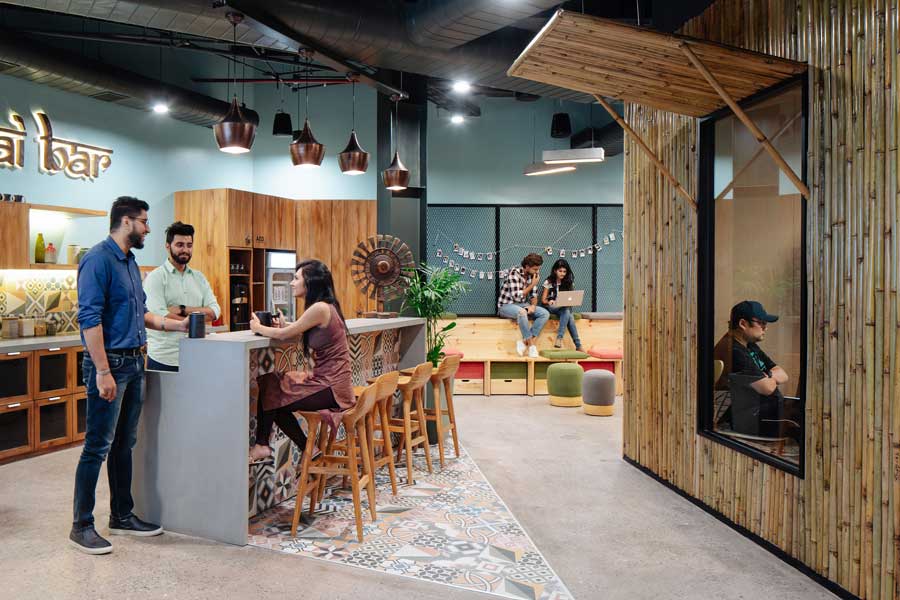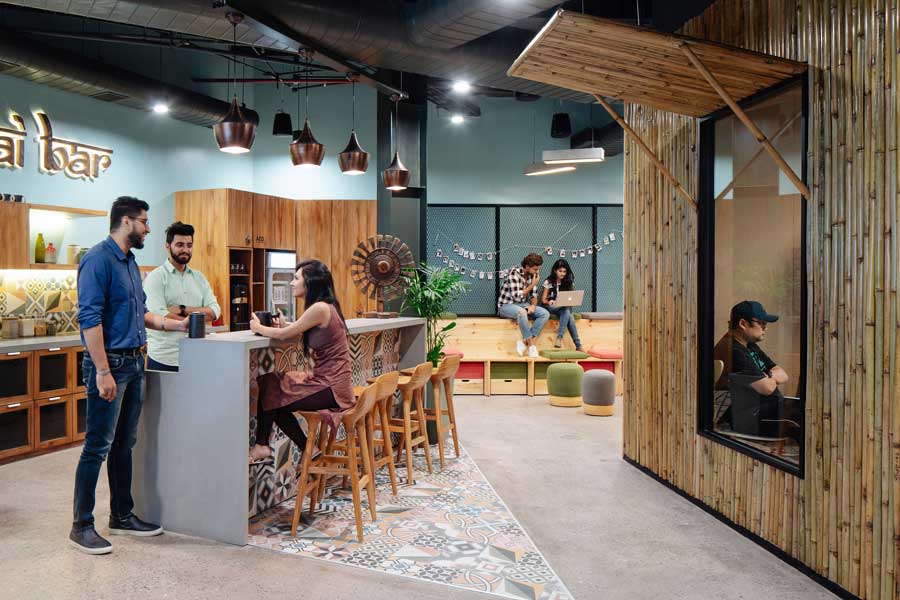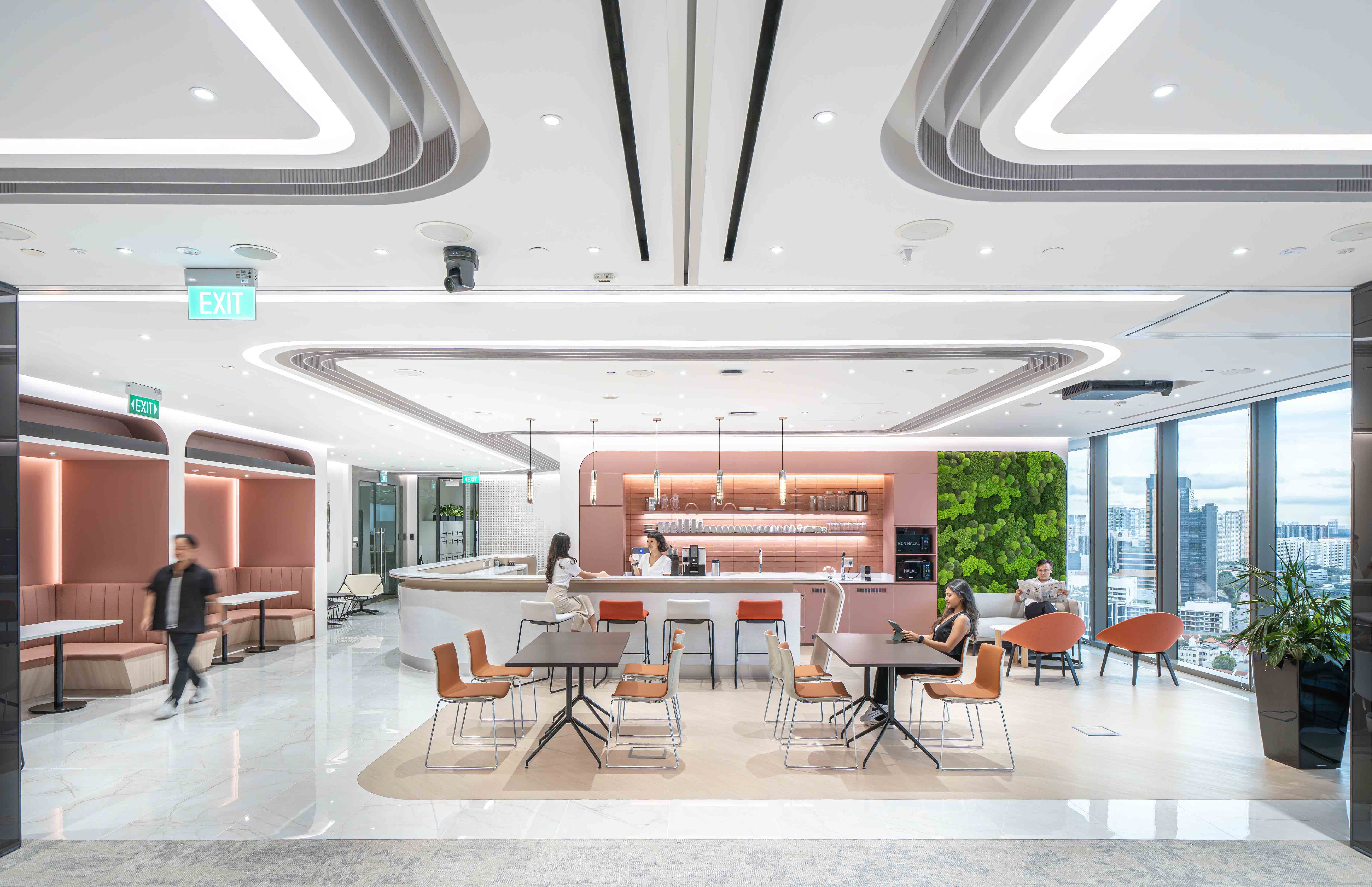A look at workspaces that foster communities
Breakfast with your friend at that new café before work, a stroll in the park during your coffee break, a quick gym session with your workout buddies in the evening, and a fancy dinner date with your spouse – work-life balance doesn’t get better than that! Of course, in the modern work context, you might be enjoying all of this right within your office campus.
Today, companies are opening up their premises to not just the employees, but to the entire community — and it makes so much sense in the modern professional landscape. Unlike the 9-to-5 workdays of the past, employees now do not have fixed hours in the office. Nor do they have fixed places where they work from. While fluid schedules are great for workplace productivity, it also means that the time employees get to spend with their loved ones becomes more undefined. So it is not surprising that the new-age idea of work-life balance looks very different from that of the previous generation of workers.
thebridge by Ascendas-Singbridge, Singapore
With cafes and restaurants, parks and galleries and even sweeping shopping complexes, mega office campuses are becoming spaces where the entire community is welcome. Community-led workspace designs have obvious benefits for employees, their families, friends and neighbours. But what’s in it for the companies? Let’s have a look:
A more engaged workforce
One of the biggest benefits of a community-centred workplace strategy is to keep employees invested in the company and the work they do. A recent Gallup study conducted in the U.S. revealed that just 33% of American workers felt engaged at their workplace.1 All around the world, younger employees have reported feeling disengaged with the older, hierarchical professional structures and water-tight job roles that restrict growth. They do not want to see their work as just something that pays the bills, nor do they identify with the outdated attitude that one should keep their personal business completely detached from their professional lives.
Companies are evolving to accommodate this shift in attitude. Future-facing organisations recognise employees as individuals who have rich and complex lives outside of their workday. They plan their office design in such a way that the personal aspect of employees’ lives complements the professional. When not forced to compartmentalise, people can focus better and be more productive.
Piramal, Mumbai
And this goes much beyond comfortable workstations and inclusive office policies – firms are being more mindful about their ‘in-between spaces’ too. In-between spaces are the areas where people congregate when they are not at their desks, which is about 20% of the workday on an average. These can be anything from the pantry and café areas to the lounges and other hangout spots. If these in-between spaces can provide opportunities to mingle with different people, the more likely employees are to be productive and engaged during that 20% of time spent away from the work desk.
1880, Singapore
Often, the conversations and the impromptu exchange of thoughts and ideas that occur in these in-between spaces are more powerful than anticipated. A great testament to this notion is the 1880 members’ club in Singapore that we helped create along with Timothy Oulton several months back. 1880 features a café, a lounge, a cocktail bar, a restaurant, a coworking space and more. The entire space is designed solely to encourage conversations and spark debates among people from varied fields and walks of life.
Integrating the company with the community
Public spaces that bring people together are vital in establishing a sense of belonging within a community. These spaces include parks, cafes, libraries, or pubs – basically anywhere people can gather to engage socially and make new acquaintances. Urban sociologist Ray Oldenburg called these areas the ‘Third Places’ – with the home and the office being the first two places where people spend most of their time.
However, firms today are breaking out of this ‘Second Place’ mould. With the rise of resimercial design concepts, offices are already embracing the essence of homes. In addition, they are making an effort to provide these Third Places too. And by doing so, they are becoming an integral part of the community as a whole.

Airbnb, Gurgaon
A prime example is the Google campus in California that has an entire plaza populated with shops, cafes and restaurants that are open to the public. Pedestrian walkways and bike lanes crisscross the campus, connecting these public spaces. On a particularly sunny day, one can see employees as well as locals, spread out across the relaxation deck, enjoying the weather. This lets locals experience the brand, which is particularly important for an organisation that is driven by interaction. Moreover, it also makes Google synonymous with the buzz and action in the city. The company thus becomes an inextricable part of the day-to-day lives of people – even if they aren’t directly associated with the brand.
Supporting local businesses
This is yet another way in which companies and communities build mutually beneficial relationships. Firms with open campuses often let out these public spaces to local businesses – be it as studios for up-and-coming artists, galleries for handicraft exhibits or even pop-up restaurants run by local families. Some organisations even host farmers’ markets or charity events at their campuses.
This is extremely beneficial for local businesses as they are able to enjoy the advantage of prime real estate, without having to afford the sky-high rents. Companies, on the other hand, are able to put their otherwise underutilised spaces to use in a way that makes them the hub of community activities. This also contributes to an atmosphere of cross-collaboration and openness, where the community can share local talent without stifling competition.
Interested in embracing this new direction that modern office design is taking? Let us tell you how we can make your workspace work harder for your brand and the wider community. Do reach out.
1 https://www.entrepreneur.com/article/322281
2 http://viewer.zmags.com/publication/e0c2bfaa#/e0c2bfaa/72



